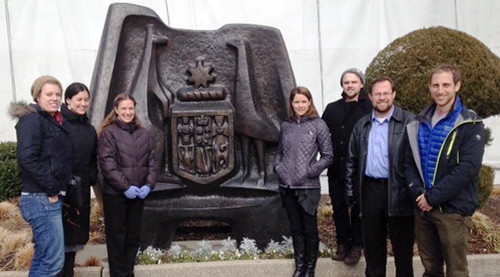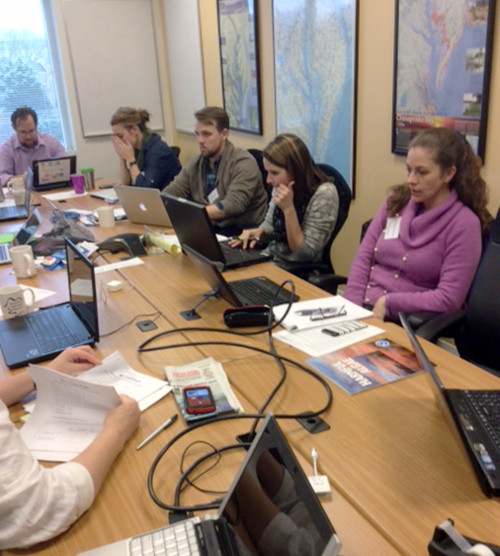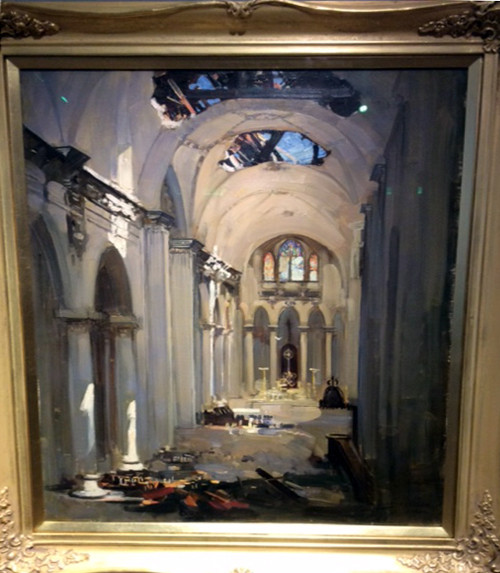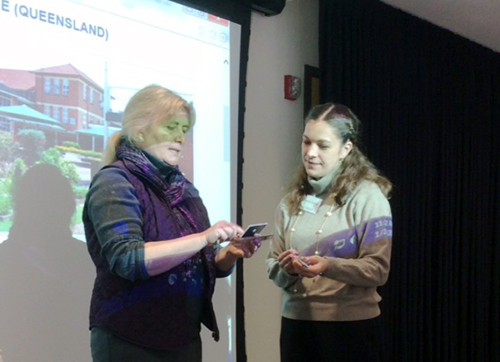USAUS-H2O Annapolis-Washington D.C. workshop
Bill Dennison ·As the final element of launching Phase 2 of the USAUS-H2O virtual environmental exchange program between eight high schools in Australia and eight high schools in the U.S., we held a teacher workshop for U.S. teachers in Annapolis and Washington, D.C. Judy O'Neil is the lead investigator of this project, assisted by Cindy Heil from Bigelow Laboratory for Ocean Sciences in Maine, Simon Costanzo and Brianne Walsh from IAN. The equivalent Australian teacher workshop was held last year in Australia's capitol, Canberra, described in a previous blog post. Teachers from schools in Maryland, Louisiana, Florida, California, Oregon, Maine, Indiana, and New Jersey gathered in January to discuss the program.
It became apparent during this workshop that this incredible diversity of large and small schools, private and public schools, spread over the entire continent had one commonality--smart, energetic and passionate teachers. These USAUS-H2O teachers were uniformly enthusiastic about the program and were fun to be with.

The teachers were the following: Tyler Grinberg from Mendocino High School in Northern California; Giselle Helemn from Holy Rosary High School in New Orleans, Louisiana; Sean Melican from Oak Knoll School of the Holy Child in Summit, New Jersey; Patrick Bond from the Barrie School in Silver Spring, Maryland; Amanda Pierman from the Benjamin School in Palm Beach Gardens, Florida; Jill Tenet from Zionsville Community High School in Zionsville, Indiana; Anna-Kate (AK) Peterson from Cleveland High School in Portland, Oregon; and Lauren Graham from Boothbay Region High School in Boothbay Harbor, Maine who participated in Phase 1 but was unable to attend this year's workshop.
Day One of the workshop was hosted by the Integration and Application Network in the UMCES Annapolis office. Teachers became acquainted with the program and learned about each other, played several rounds of conceptionary and produced short introductory videos. We had an amazing dinner at the historic Middleton Tavern (established in 1750). It was fun to introduce many of the teachers to their first oyster shooters and crab dip. Dinner was followed by a rousing game of trivia at the pub and one of the USAUS-H2O teacher teams was able to secure third place and take home a bottle of wine.

The workshop timing created some interesting synergies and challenges. The first day of the workshop was Australia Day, January 26; quite appropriate, considering the U.S. -- Australia exchange. Australia Day is a national holiday commemorating the formation of Australia in 1901' but it also signifies the end of the Austral summer vacation. Some of the Australian partner school teachers were emailing about getting the program kicked off, just as we were wrapping up the workshop. Being in the middle of the North American winter, we also experienced some weather, with a little snow in Maryland, fortunately not the blizzard conditions faced by the Northeast. For some of the teachers coming from warmer climates, the snow was a real novelty.
Day Two of the workshop was hosted by the Australian Embassy in Washington, D.C. The predicted snow storm led to a two hour delay for the federal government, which reduced the traffic for our trip into Washington. Ms. Taylor White, Deputy Director of Education Policy at the Embassy gave us a tour of the Embassy Art Gallery. This was a very interesting exhibit commemorating the one hundred year anniversary of Gallipoli, a fierce World War I battle in present day Turkey. The exhibit featured 'war art', commissioned by the Australian War Memorial to capture the sacrifice that Australian soldiers have made over the past century. The art varied widely, from landscapes, to war scenes, to scenes of supporting roles played behind the front lines, to prisoner of war scenes, to modern day surreal night vision scenes.

Taylor White made an interesting presentation on the Australian National Curriculum, stimulating a discussion of the different education approaches in American high schools. I was struck at how much the content descriptions in the Australian National Curriculum were akin to the environmental literacy principles that we have been developing in various IAN case studies. A example of one of the science descriptions is the following: "Science is a global enterprise that relies on clear communication, international conventions, peer review and reproducibility (ACSBL008)". I like this clear, crisp statement that goes to the essence of what science is about.
We concluded the workshop with a gift exchange of items unique to the school or region from the partner schools. For example, Tyler Grinberg brought a beautiful red abalone shell from California for his partner school, Rossmoyne Senior High School in Western Australia. As the teachers make their way back to their schools, I was struck at how fortunate their students are to have such motivated teachers helping them connect to students halfway around the world. This Phase 2 of the USAUS-H2O project is definitely underway now. We can all watch the students complete the modules based on the water cycle throughout this coming semester.

About the author
Bill Dennison

Dr. Bill Dennison is a Professor of Marine Science and Vice President for Science Application at the University of Maryland Center for Environmental Science.

